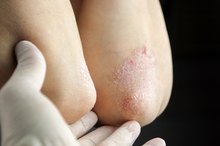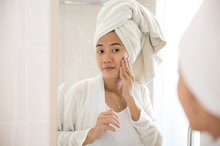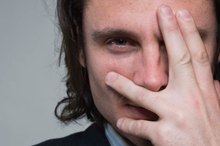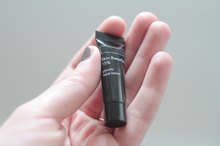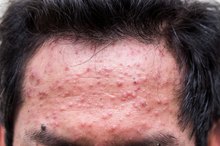Sun Damage or Rosacea?
Rosacea and sun-damaged skin are frequently found on the face, so they can cause sufferers to feel self-conscious about their appearance and even develop self-esteem issues. Knowing the difference between these skin problems can help you know the type of treatment to seek from a professional.
Sun Damage
Sun damage is caused by exposure to ultraviolet (UV) rays from the sun and tanning beds 1. Aging by the sun is called photoaging, which is the largest culprit of premature aging of the skin. A sunburn is damage that can be seen directly after sun exposure and is usually at its worst within a 24-hour period 1.
Most damage can be seen after years of exposure to UV rays. In your twenties, deliberately tanning doesn’t immediately change the aging appearance of your skin. However, as you grow older your skin loses its elasticity and slows down the production of collagen. Skin that has been sun damaged may also appear leathery and develop brown spots.
According to Skin Sight, red and scaly lesions on the skin are called actinic keratoses and they are pre-cancerous 1. Another sign of sun damage that could result in cancer are moles that are oddly shaped, not identical on both sides and larger than average 1.
- Sun damage is caused by exposure to ultraviolet (UV) rays from the sun and tanning beds 1.
- However, as you grow older your skin loses its elasticity and slows down the production of collagen.
Rosacea
Rosacea and Enlarged Pores
Learn More
Unlike sun damage, rosacea is a disorder of the skin 1. According to the National Rosacea Society, rosacea affects over 16 million Americas, but most of them have no idea they are affected 2. This disorder can be confused with the appearance of a sunburn because it often causes facial redness that is especially prominent around the cheeks, nose, forehead and chin.
Additional symptoms are visible blood vessels and pimples, or it may feel like there’s sand in your eyes. In some cases the nose may appear puffy.
- Unlike sun damage, rosacea is a disorder of the skin 1.
- This disorder can be confused with the appearance of a sunburn because it often causes facial redness that is especially prominent around the cheeks, nose, forehead and chin.
Differences
If your skin is often red without a sunburn, there’s a possibility it is rosacea.
Rosacea can often be triggered by exposure to UV rays, but it is different from a sunburn. Rosacea causes skin to appear flushed and may even resemble a skin rash or chapped skin. Although it can cause discomfort, it usually does not have the same physical discomfort level as a sunburn.
Rosacea does not cause brown discoloration of the skin, moles or fine lines and wrinkles. If these are the main complaints of your skin’s appearance, sun damage is more likely than rosacea 1.
- If your skin is often red without a sunburn, there’s a possibility it is rosacea.
- Rosacea causes skin to appear flushed and may even resemble a skin rash or chapped skin.
Treatments
How to Get Rid of Freckles With Vitamin C
Learn More
Rosacea has no cure, but there are ways to minimize symptoms and reduce flare-ups on your skin. Knowing the cause of your flare-ups can help control rosacea.
Alcohol, especially red wine, will often trigger rosacea symptoms, as will exercise. The health benefits of daily exercise,however, are far too great to eliminate this activity if it causes your face to become red. Some additional activities that can cause a rosacea flare-up are spicy foods, environmental influences, medications and hot baths. Not everyone will have the same triggers.
A sunburn will go away on its own and you can alleviate burning symptoms by applying aloe vera. However, to reduce the signs of aging from sun damage, it’s best to seek assistance from a dermatologist 1.
- Rosacea has no cure, but there are ways to minimize symptoms and reduce flare-ups on your skin.
- However, to reduce the signs of aging from sun damage, it’s best to seek assistance from a dermatologist 1.
Dermatologist
Rosacea left untreated can become more severe in the future. A dermatologist can prescribe a topical cream or, in some cases, an oral medication to help with the redness. A dermatologist may also offer suggestions for washing your face and moisturizers to use. Not everyone will have the same treatment since the severity of rosacea can vary from patient to patient.
If you have acne-like bumps with rosacea, a dermatologist will treat the acne along with the rosacea.
A dermatologist can also reduce the signs of aging caused by sun damage 1. Some options available are chemical peels, topical tretinoins and dermabrasion.
- Rosacea left untreated can become more severe in the future.
- A dermatologist can prescribe a topical cream or, in some cases, an oral medication to help with the redness.
Related Articles
References
- Skin Sight: Sun Damage
- National Rosacea Society: What is Rosacea?
- Al-balbeesi AO, Almukhadeb EA, Halawani MR, Bin saif GA, Al mansouri SM. Manifestations of ocular rosacea in females with dark skin types. Saudi J Ophthalmol. 2019;33(2):135-141.doi:10.1016/j.sjopt.2019.01.006
- Gallo RL, Granstein RD, Kang S, et al. Standard classification and pathophysiology of rosacea: The 2017 update by the National Rosacea Society Expert Committee. J Am Acad Dermatol. 2018;78(1):148-155.doi:10.1016/j.jaad.2017.08.037
- Han J, Liu T, Zhang M, Wang A. The relationship between inflammatory bowel disease and rosacea over the lifespan: A meta-analysis. Clin Res Hepatol Gastroenterol. 2019;43(4):497-502.doi:10.1016/j.clinre.2018.09.009
Writer Bio
Melissa McNamara is a certified personal trainer who holds a Bachelor of Arts in journalism and communication studies from the University of Iowa. She writes for various health and fitness publications while working toward a Bachelor of Science in nursing.


